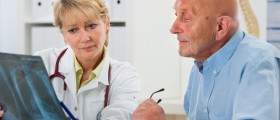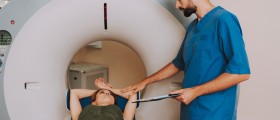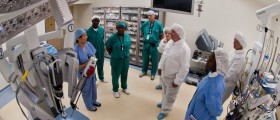Hello everyone. So it looks like that I am dealing with "broken" or whatever it is called aortic coarctation. I found this a few days ago, but I could not believe that this can be that dangerous. My doctor is my amazing friend and she tried to explain to me what can happen to me when I don't treat it. So I have decide to listen to her. She suggested me a subclavian flap for repair of aortic coaraction since this is the best method. But I am scared of any kind of surgeries. What are your experiences about it?
Loading...
Hey there dear guest. I need to admit that your topic is a little bit confusing to me. I know that a lot of kids have problems with it and I could tell you something about it, but since you have it I am not sure can I help you. I know that repair of aortic coarctation is usually performed via a left thoracotomy without cardiopulmonary bypass. But that is what I have heard, I am not sure is it correct or not. Also, there are a number of techniques available to repair the coarctation, each with its own advantages and disadvantages. Can you tell us more?
Loading...
Hi Guest,
This is quite an old procedure and hasn't been used much. It is actually first tried somewhere around 1980 but it hasn't been used much since.
Subclavian flap repair of infant coarctation has been criticized and in many centers abandoned in favor of resection with end-to-end anastomosis. However, after several studies done, subclavian flap aortoplasty remains the procedure of choice for isthmic coarctation in a lot of hospitals, as it is a simple, technically straightforward technique with a low incidence of re-stenosis and serious early and late morbidity. Furthermore, subclavian flap re-stenoses are easily treated with percutaneous intervention and seldom require surgical re-intervention via thoracotomy.
Loading...
This technique consists of a complete mobilization of the left subclavian artery extended to the origin of its first branches. The aorta need not be extensively mobilized and the intercostal arteries are individually controlled with snares. After all the proper clamping, the left subclavian artery is detached from the aorta at its origin and is opened longitudinally on its posterior aspect. The anterior wall of the aorta is then incised, beginning with the opening at the origin of the left subclavian artery and extending distally to the descending aorta 12 to 15 mm past the coarctation. The coarctation membrane is excised and the ductus is ligated and divided. The opened left subclavian artery, now forming a flap, is pulled down and sutured to the edges of the aorta, widening the coarctation site and also preserving the blood flow to the left arm.
Loading...
Hey everyone,
I was also interested to know more about this procedure ever since I've heard about it a couple of years ago but I totally forgot about it since then and never found out anything about it, how cool that I ran on to this topic here.
I'm trying to catch up with what you just wrote there Doc, but I'm afraid that I'm not doing very well there. Is there any way that you can say it in a more less complicated way? If not you, can anyone else try to explain this to me and Guest in a kind of a simple way?
